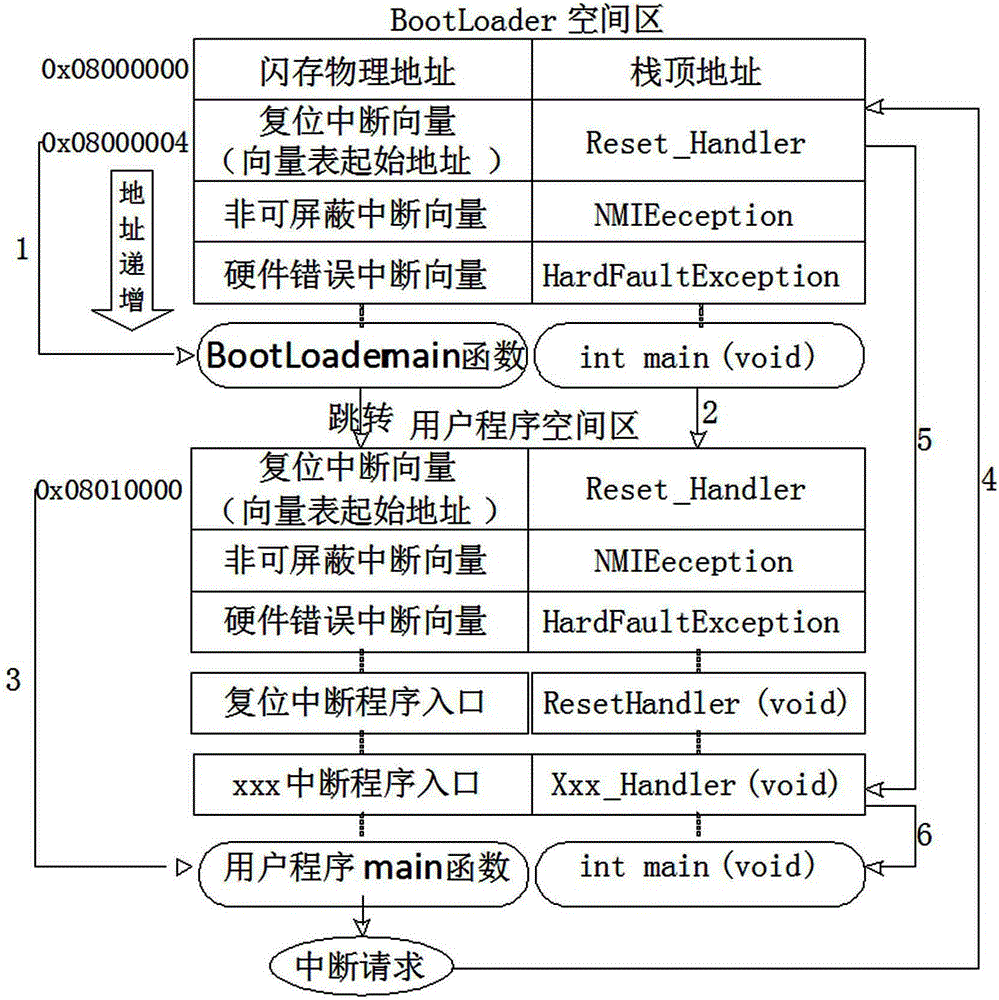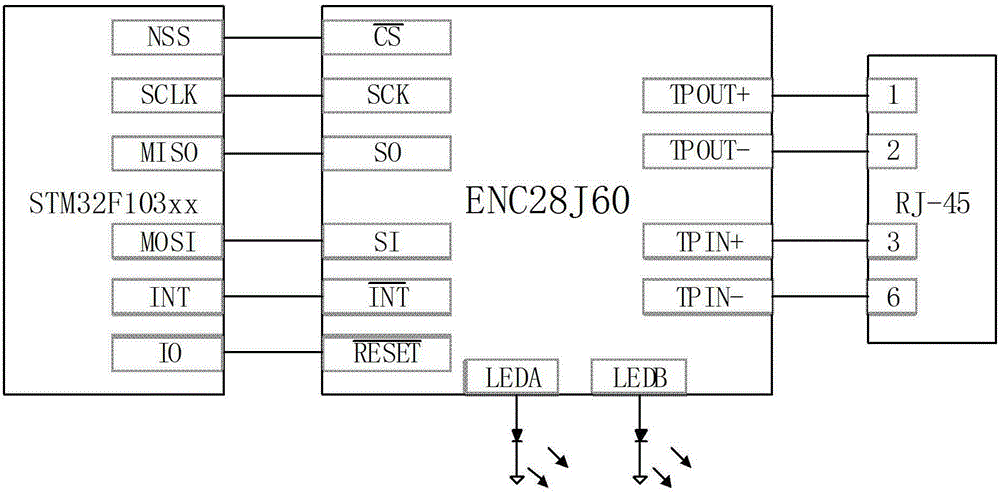Achievement of single chip microcomputer firmware upgrading method based on network
A firmware upgrade and single-chip microcomputer technology, which is applied in the computer field, can solve problems such as the difficulty of upgrading and maintaining single-chip microcomputer application systems, and achieve the effects of improving convenience, good economic benefits, and easy promotion
- Summary
- Abstract
- Description
- Claims
- Application Information
AI Technical Summary
Problems solved by technology
Method used
Image
Examples
specific example
[0045]This invention mainly adopts STM32F103xx series single-chip microcomputer and ENC28J60 Ethernet control chip, designs a method with BootLoader function, and can remotely update firmware through network interface, and describes its design principle and realization process in detail.
[0046] Utilizing the characteristics of STM32F103xx series single-chip self-reading and writing on-chip program space, first write the BootLoader program in the on-chip Flash, and then use the BootLoader program to erase and write the user program on the single-chip microcomputer without using the traditional emulator and JTAG interface way to do programming work.
[0047] The STM32F103xx series microcontrollers are based on the ARM Cortex-M3 core and are designed for high-performance, low-cost, and low-power embedded applications. It has a clock frequency of up to 72MHz, on-chip integrated 32-512KB Flash memory, which can be used to store programs and data, 6-64KB SRAM memory, which can be ...
PUM
 Login to View More
Login to View More Abstract
Description
Claims
Application Information
 Login to View More
Login to View More - R&D
- Intellectual Property
- Life Sciences
- Materials
- Tech Scout
- Unparalleled Data Quality
- Higher Quality Content
- 60% Fewer Hallucinations
Browse by: Latest US Patents, China's latest patents, Technical Efficacy Thesaurus, Application Domain, Technology Topic, Popular Technical Reports.
© 2025 PatSnap. All rights reserved.Legal|Privacy policy|Modern Slavery Act Transparency Statement|Sitemap|About US| Contact US: help@patsnap.com



